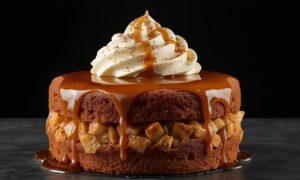Ever feel too rushed to make a healthy breakfast? You’re not alone. That’s where a Power Smoothie comes in quick, easy, and packed with nutrients to kickstart your day. This isn’t just any smoothie. It’s a bold blend of juicy blueberries, creamy bananas, and hearty oats. It fuels your body and satisfies your taste buds in one go.
I turn to this Power Smoothie whenever I need something fast and nourishing. It takes just five minutes to make, and it keeps me full for hours. The natural sweetness of fruit, the fiber from oats, and the smooth texture all work together. It’s refreshing, energizing, and honestly addictive.
In this post, I’ll walk you through how to make the perfect Power Smoothie at home. You’ll learn how to tweak the ingredients to match your needs whether you’re looking to add protein, go dairy free, or lower the sugar. I’ll also share tips for storing, prepping ahead, and customizing the flavor. Want to toss in some spinach or chia seeds? I’ll show you how without messing up the taste.
By the end, you won’t just have a recipe you’ll have a go to solution for busy mornings, post workout hunger, or even a light, healthy dessert. The Power Smoothie is more than a drink. It’s a lifestyle hack in a glass.
Let’s blend something great. You’re going to love how easy and powerful it is.
Ingredients & Strategic Substitutions
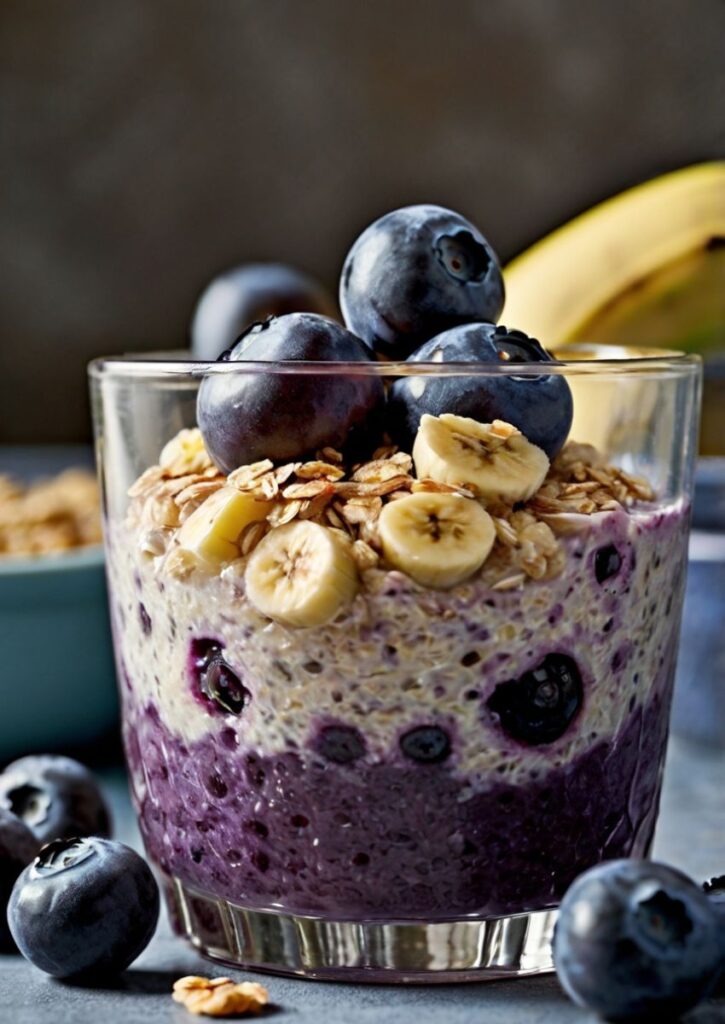
The Liquid Foundation
Start with 1 cup of your base liquid this determines your smoothie’s personality. Unsweetened almond milk offers clean neutrality with minimal calories. Coconut milk brings richness and MCTs for quick energy. Oat milk provides natural sweetness and fiber, while whole milk delivers casein proteins.
For dairy free options, hemp milk offers complete proteins with nutty undertones. Green tea (cooled) creates an antioxidant boost with gentle caffeine, though it requires careful balancing to avoid bitterness.
Protein Powerhouses
Twenty to thirty grams of protein transforms your smoothie from snack to meal replacement. Whey protein isolate dissolves smoothly and your body absorbs it quickly ideal for post workout recovery. Plant based alternatives like pea protein work equally well, though they need extra blending time.
Greek yogurt (½ cup) provides probiotics alongside protein, but can make your smoothie thick. Silken tofu might sound odd, but ¼ cup adds creaminess without flavor interference. Raw eggs create unparalleled richness for those comfortable with them.
Collagen peptides dissolve completely, add protein without texture changes, and potentially support joint health. Two scoops provide 18-20 grams of protein.
Fat for Satiety and Absorption
Your body needs healthy fats they’re essential for absorbing fat soluble vitamins and maintaining steady blood sugar. Half an avocado creates luxurious texture while providing monounsaturated fats. It sounds strange until you taste it; properly blended avocado adds richness without any vegetal flavor.
Nut butters work beautifully two tablespoons of almond butter, cashew butter, or tahini. Each brings distinct flavor profiles and nutritional benefits. Tahini particularly shines in chocolate based power smoothie combinations, adding subtle earthiness that complements cacao perfectly.
Fat for Satiety and Absorption
Healthy fats aren’t optional they’re essential for absorbing fat soluble vitamins and maintaining steady blood sugar. Half an avocado creates luxurious texture while providing monounsaturated fats. It sounds strange until you taste it; properly blended avocado adds richness without any vegetal flavor.
Nut butters work beautifully two tablespoons of almond butter, cashew butter, or tahini. Each brings distinct flavor profiles and nutritional benefits. Tahini particularly shines in chocolate based smoothies, adding subtle earthiness that complements cacao perfectly.
MCT oil (1 tablespoon) converts rapidly to energy, though it can cause digestive upset if you’re not accustomed to it. Start with 1 teaspoon. Coconut butter offers similar benefits with added fiber and minerals.
Carbohydrate Complexity
Frozen fruits provide natural sweetness and ideal texture. Bananas create creaminess and provide potassium for muscle function. Berries deliver antioxidants with lower sugar content. Mango and pineapple add tropical brightness and digestive enzymes.
Dates (2-3 Medjool) provide concentrated sweetness plus fiber. They blend completely when soaked for 10 minutes beforehand. Frozen cauliflower might sound absurd, but ½ cup adds volume without detectable flavor.
Sweet potato (pre cooked and frozen) works surprisingly well in chocolate smoothies. It adds complex carbs and beta carotene while creating satisfying thickness.
Micronutrient Boosters
This is where professional smoothies separate from amateur attempts. Spinach or kale (1-2 cups) disappear completely when you blend them with strong flavored fruits. Start with spinach it’s milder and nearly undetectable.
You can concentrate nutrition dramatically with powdered superfoods. Spirulina (1 teaspoon) provides complete proteins and B-vitamins, though its algae flavor needs careful masking. Maca powder adds caramel notes while supporting energy levels. Cacao powder transforms any power smoothie into chocolate decadence while delivering magnesium.
Chia seeds (1 tablespoon) provide omega-3s and create interesting texture when you allow them to gel for 5 minutes after blending. Ground flaxseed offers similar benefits with smoother integration.
Step by Step Construction Techniques
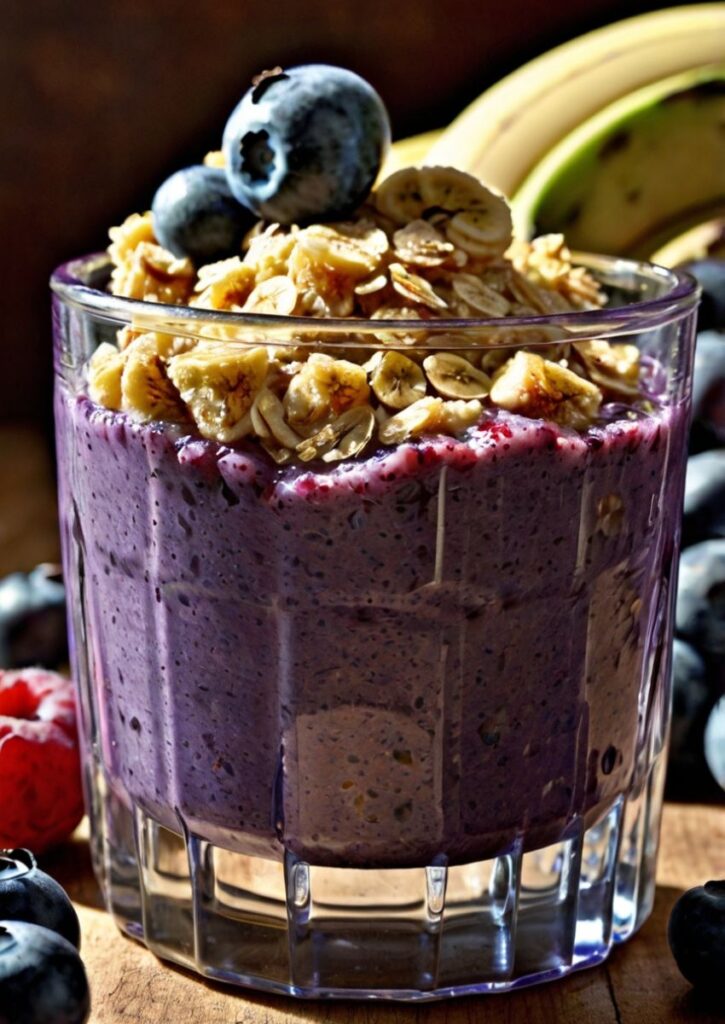
Layer for Success
Professional power smoothie construction follows specific principles. Liquid goes first this protects your blender blades and ensures even mixing. Add your softest ingredients next: yogurt, nut butters, oils. Frozen fruits and ice come last to prevent blending resistance.
Room temperature ingredients blend easier than cold ones. If you use frozen fruits, let them sit for 2-3 minutes before blending. This prevents chunks that refuse to break down.
The Blending Science
Start on low speed for 30 seconds, then gradually increase to high. High powered blenders can handle everything, but standard blenders require patience. Pulse tough ingredients like dates or nuts before you add liquids to prevent chunks.
Stop periodically to scrape down sides unblended ingredients hiding under the blade create texture inconsistencies. If your smoothie becomes too thick, add liquid 1 tablespoon at a time. Too thin? Add frozen fruit or ice gradually.
Temperature matters more than most realize. Extremely cold smoothies numb taste buds, requiring more sweetener. Room temperature smoothies taste sweeter but lack refreshing qualities. The sweet spot sits around 45-50°F cold enough to refresh but warm enough to taste.
Common Pitfalls and Prevention
Over blending creates foam and can make nut based smoothies bitter. Ninety seconds of high speed blending should suffice for most combinations. Under blending leaves chunks and creates uneven distribution particularly problematic with powders or leafy greens.
Protein powder clumps when you add it to cold liquids too quickly. Pre blend protein powder with a small amount of liquid to create a slurry, then add remaining ingredients. This technique, borrowed from sauce making, prevents lumps entirely.
Oxidation begins immediately after blending, causing color changes and nutrient loss. Add a squeeze of lemon juice to slow this process particularly important with green power smoothie combinations that turn brown within hours.
Advanced Techniques and Variations
Texture Mastery
Professional smoothie makers understand texture as much as flavor. Frozen bananas create ice cream like consistency perfect for dessert style smoothies. Frozen mango provides similar richness with tropical brightness.
Oats (¼ cup) add substantial thickness and fiber when you blend them thoroughly. Steel cut oats work better than rolled oats for smoothie applications they break down more completely. Soak them overnight for even smoother integration.
You can freeze your liquid base in ice cube trays instead of using regular ice this maintains flavor concentration while providing necessary coldness and thickness.
Flavor Layering Strategies
Like building any complex dish, flavor development requires technique. Sweet elements should balance tart ones if using tart berries, increase your sweet components proportionally. Banana naturally balances most tart fruits.
Spices transform simple combinations into sophisticated blends. Cinnamon pairs beautifully with apple and sweet potato combinations. Vanilla extract (real, not imitation) elevates almost any fruit combination. Ginger adds warmth and aids digestion start with ¼ teaspoon fresh grated ginger.
Mint creates refreshing complexity, particularly in chocolate combinations. Fresh herbs like basil work surprisingly well with stone fruits like peaches or plums.
Seasonal Adaptations
Summer calls for lighter, more refreshing combinations. Cucumber (peeled) adds hydration and subtle flavor. Watermelon creates natural sweetness with high water content. Coconut water replaces heavier milk bases for hot weather consumption.
Winter smoothies benefit from warming spices and richer ingredients. Cacao, cinnamon, nutmeg, and cardamom create comfort food qualities. Cooked sweet potatoes or butternut squash work beautifully in spiced combinations.
Fall ingredients like pumpkin puree (not pie filling) provide seasonal appeal with substantial nutrition. Apple and cinnamon combinations satisfy autumn cravings while delivering consistent energy levels.
The Science Behind Peak Performance
Nutrient Timing and Absorption
The power smoothie excels because of when and how nutrients become available. Simple sugars from fruits provide immediate energy, while complex carbohydrates offer sustained fuel. Proteins begin breaking down within 30 minutes, providing amino acids for muscle repair and neurotransmitter production.
Fats slow overall digestion, preventing blood sugar spikes that lead to energy crashes. This combination creates steady energy release over 2-3 hours perfect for sustained mental or physical performance.
Fat soluble vitamins (A, D, E, K) require dietary fat for absorption. Including healthy fats ensures maximum nutrient utilization from your fruits and vegetables. This is why low fat smoothies often fail to deliver promised energy levels.
Hydration and Electrolyte Balance
Proper hydration involves more than water consumption. Electrolytes sodium, potassium, magnesium maintain cellular function and energy production. Bananas provide potassium, while coconut water offers natural electrolyte replacement.
Adding a pinch of high quality sea salt (not table salt) provides sodium and trace minerals. This seems counterintuitive in a sweet drink, but proper sodium levels enhance hydration and can actually improve perceived sweetness.
Digestive Optimization
Blending pre digests ingredients mechanically, reducing digestive energy expenditure. This explains why smoothies provide energy more quickly than whole foods requiring extensive chewing and breakdown.
Combining certain ingredients enhances absorption. Vitamin C (from citrus or berries) increases iron absorption from leafy greens. Healthy fats improve carotenoid absorption from orange and red vegetables.
Digestive enzymes naturally present in pineapple and papaya aid protein digestion. Including these fruits in protein heavy smoothies can reduce digestive discomfort some experience with high protein drinks.
Serving and Presentation Excellence
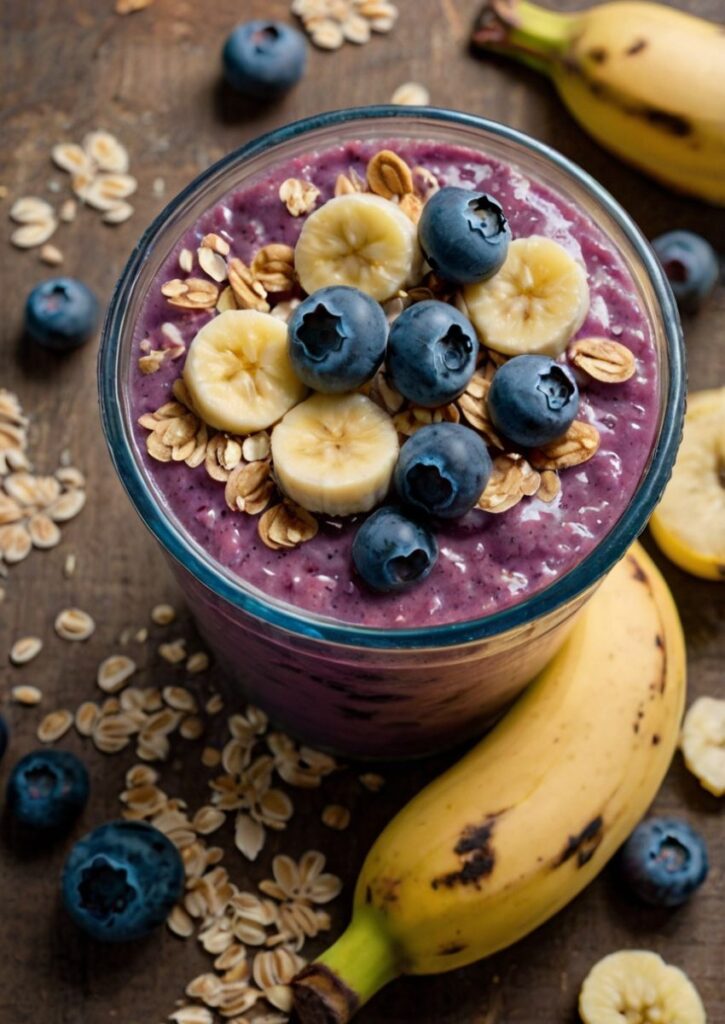
Temperature and Timing
Serve power smoothies immediately after preparation for optimal texture and flavor. If storage is necessary, keep refrigerated for maximum 24 hours. Separation is natural simply stir before consuming.
Glass choice affects perception and enjoyment. Wide mouth mason jars provide rustic appeal and practical storage. Tall glasses make portions appear larger. Clear containers showcase beautiful colors, particularly important for green smoothies that might otherwise seem unappetizing.
Garnish and Enhancement
Professional presentation elevates simple smoothies into cafe worthy creations. Coconut flakes, chopped nuts, or granola provide textural contrast when sprinkled on top. Fresh fruit slices create visual appeal and hint at flavors within.
Drizzling nut butter or honey creates attractive patterns while adding flavor complexity. A light dusting of cacao powder or cinnamon provides aromatic enhancement and visual sophistication.
Meal Integration Strategies
Power smoothies work throughout the day when properly constructed. Morning versions should emphasize sustained energy include complex carbohydrates and substantial protein. Post workout smoothies require quick digesting proteins and carbohydrates for recovery.
Evening smoothies should avoid high sugar content that might interfere with sleep. Focus on proteins, healthy fats, and low glycemic fruits like berries.
When you use power smoothie as meal replacements, ensure adequate calorie density. A proper power smoothie should provide 400-600 calories depending on individual needs and activity levels.
Troubleshooting and Professional Tips
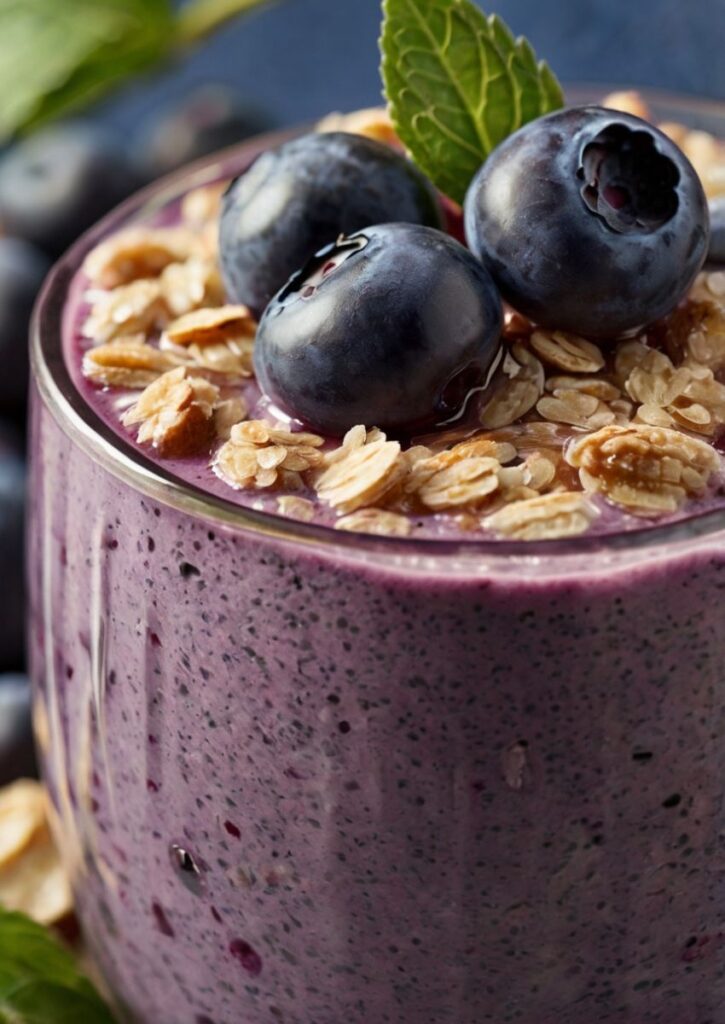
Equipment Considerations
Blender quality dramatically affects results. High speed blenders create silky textures that you can’t achieve with standard models. However, technique can compensate for equipment limitations. Pre chopping tough ingredients and allowing frozen components to thaw slightly helps standard blenders perform better.
Blender jar shape matters. Narrow jars create better vortex action for thorough mixing. Wide jars require more liquid to blend effectively. Understanding your equipment’s strengths and limitations ensures consistent results.
Storage and Batch Preparation
Meal prep enthusiasts often ask about batch preparation. Individual ingredients store better than finished smoothies. Pre portion smoothie packs in freezer bags add everything except liquid. This maintains quality while saving time.
Some ingredients don’t freeze well. Bananas become mushy, while citrus can develop bitter compounds. You should add fresh ingredients just before blending.
You can freeze liquid bases in ice cube trays for portion control and convenience. This technique maintains flavor while providing necessary coldness without dilution.
Quality Control Standards
Taste as you build this prevents disasters and ensures balanced flavors. Start with less sweetener than you think you need; you can always add more. Over sweetened smoothies become cloying and may cause energy crashes.
Color provides quality indicators. Bright, vibrant colors suggest fresh ingredients and proper preparation. Dull or brown colors often indicate oxidation or over ripe ingredients.
You should achieve a consistency that’s smooth and creamy, not thin or chunky. Proper consistency coats a spoon lightly when lifted from the glass.
The ultimate power smoothie transcends simple nutrition it becomes liquid fuel engineered for optimal human performance. Understanding ingredient interactions, preparation techniques, and nutritional science transforms this humble drink into a sophisticated tool for sustained energy and health.
Mastery comes through experimentation and attention to detail. Start with basic combinations, then gradually incorporate advanced techniques and ingredients. Pay attention to how different combinations affect your energy levels, digestion, and overall well being.
Remember that the best power smoothie is the one you’ll actually drink consistently. Nutritional perfection means nothing if the flavor doesn’t inspire daily consumption. Find your preferred combinations, then optimize from there.
The techniques outlined here represent professional level understanding distilled into practical application. Use them as guidelines, not rigid rules. Your perfect power smoothie awaits discovery through careful experimentation and mindful attention to your body’s responses.
Frequently Asked Questions
How Long Can I Store a Power Smoothie?
A power smoothie maintains optimal quality for 24 hours when refrigerated in an airtight container. Nutritional value begins degrading immediately due to oxidation, particularly vitamin C and antioxidants. Adding lemon juice slows this process. Separation is natural simply stir before drinking. For best results, consume within 12 hours of preparation.
Why Does My Smoothie Taste Bitter?
Bitterness usually comes from over blending nuts or seeds, using too much leafy greens, or including the white pith from citrus fruits. Reduce blending time, balance greens with sweet fruits like banana or mango, and carefully peel citrus. If already bitter, add dates or a small amount of vanilla extract to mask the flavor without adding refined sugar.
Can I Use a Regular Blender for Power Smoothies?
Absolutely, though technique becomes more important. Let frozen ingredients thaw for 2-3 minutes, pre chop tough items like dates, and blend in stages liquids and soft ingredients first, then gradually add harder components. You might need to stop and scrape sides more frequently, and final texture may be less silky than high speed blender results.
How Do I Control Smoothie Consistency?
Control consistency by adjusting liquid to solid ratios gradually. For thick smoothies, add liquid 1 tablespoon at a time until you reach desired consistency. For thin smoothies, add frozen fruit, ice, or ingredients like oats or avocado. Frozen bananas are particularly effective for creating thickness without diluting flavor.
What’s the Best Way to Add Protein Powder?
Create a slurry by mixing protein powder with a small amount of your liquid base before adding other ingredients. This technique, borrowed from professional sauce making, prevents clumping. Add protein powder to room temperature liquids when possible extremely cold liquids increase clumping risk. Blend immediately after adding to prevent settling.

Swiftly Captions by Tina Smith — Quick, flavorful food recipes made simple, bringing fresh inspiration to your kitchen every day





